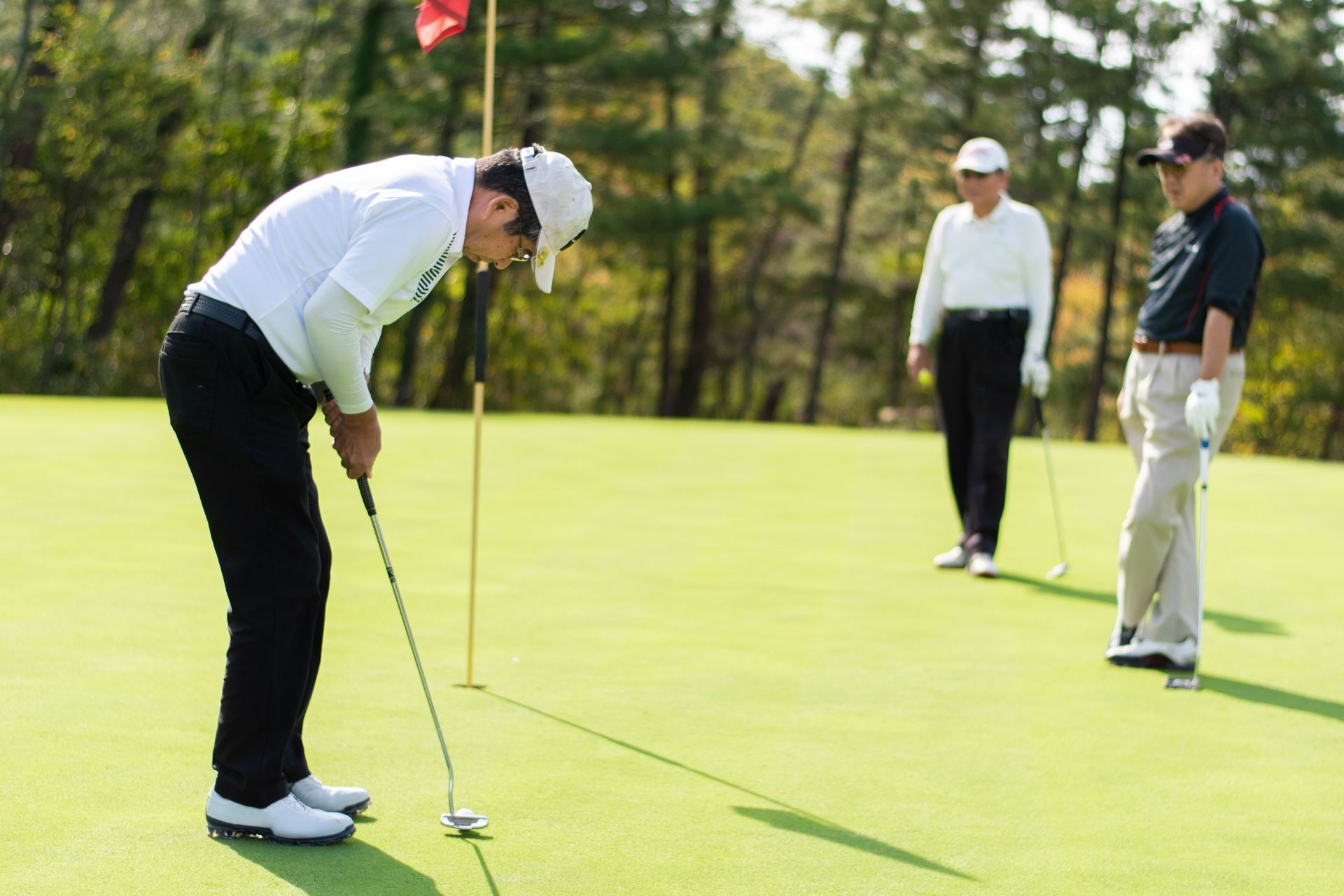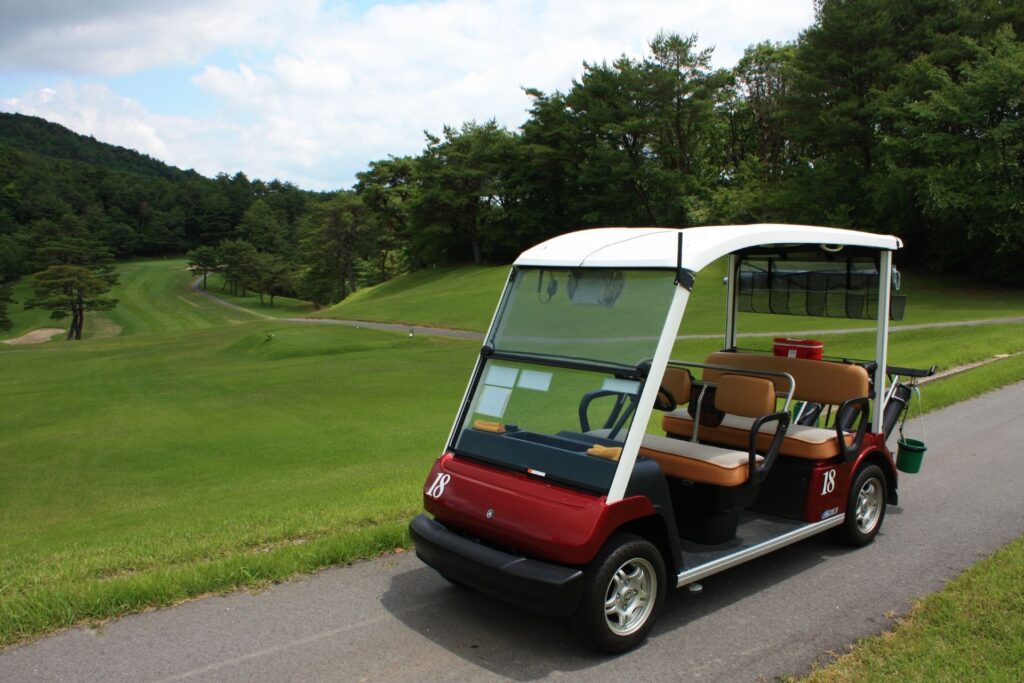
JAPANESE GOLF MANNER

JAPANESE GOLF MANNER
How to play golf in Japan
Most golf courses in Japan are membership courses and have strict about etiquette and manners. Some of them are very unique. Please take a look at the following video. Make sure you study Japanese golf culture golf before you visit.
PRE-PLAY
Dress Code
Outside the summer months of July-August, pre- and post-play (i.e., in the Club House) at most Japanese courses, it’s obligatory or at least recommended to wear a jacket. So, it’s very important to check Dress Code rules with any golf course on which foreign visitors plan to play in Japan. Stricter courses may refuse to allow those not adhering to their Dress Code to play.

On Arrival, A Blazer or Jacket must be worn, while in July & August, a Jacket need not be worn, but can be carried. Anyone wearing a t-shirt, jeans, shorts, sneakers or sandals will not be allowed to enter the Club. During Play, all players must wear a shirt with a collar. Turtle-neck or polo neck wear is not allowed. Shorts may only be worn in combination with long socks, which must completely cover the ankle-area.

From Arrival to Tee-Off
First Step
Players arriving by vehicle are greeted as they arrive by Club Staff , to whom they immediately hand their golf-bag. The Staff arranges for the bag to be placed on the appropriate cart, while the Player enters the Club House to change. For this reason, itʼs important that golf bags and golf-covers have clearly visible name-tags.
Second Step
On entering the Club House, players proceed to Reception, where they write their name and address on a registration card, and in return receive their locker-key and scorecard-holder. All purchases
at the course are then charged to the playerʼs bill by simply giving their signature and locker number, and the bill is settled at Reception before leaving the course.
Third Step
Players then proceed to their locker, change into golf-wear and shoes (soft-spiked shoes only), put their personal belongings in the locker, lock it and proceed to the course.
Fourth Step
Players wishing to practice at the Driving Range should buy a token for the range-ball-vending-machine at the Caddy Masterʼs Desk (usually adjacent to the exit from the Club House to the course – the playerʼs locker number is needed for this), select a few clubs, and walk to the practice range (carts arenʼt used to access the practice range in Japan). The putting practice green is usually close to the Club House, and there the player uses their own balls.
Fifth Step
Etiquette in Japan is for all players to be at the fi rst tee 10 minutes before their offi cial start time.
※Very few Japanese courses have adopted the American-style of players paying green-fees at the Pro-Shop, not using a locker, putting their own golf clubs directly onto their cart, and, when their official start time comes, driving their cart to the 1st tee.
Auto-Driving Remote-Controlled Carts & Caddies
Japanese golf carts are generally auto-driving remote-controlled vehicles seating either 4-players, or 5 people including a caddy. And, on most courses are Cart Path Only. Some courses slightly restrict the speed at which these carts move to add an extra dimension of safety, but visiting golfers should also be made fully aware that they are likely to be issued with warnings in case of slow play, or slow cart-progress. In Japan, one caddy usually serves 4 players. These caddies (mostly ladies) move quickly and precisely across the course to support their players. Please pro-actively try to communicate with your caddy to get the best of their knowledge and support !

WHILE PLAYING
Lunch Breaks
Almost no Japanese courses offer the global standard of playing 18-holes consecutively. In Japan, lunch-breaks, lasting 30-45 minutes, are required between playing the front-9 and back-9 holes. And Club House restaurants offer a variety of dishes including some featuring local produce unique to the course, and others highlighting local-specialty dishes.
These are dishes which most Japanese enjoy for their day-to-day lunches, but are almost all items which can’t be found in Japanese restaurants outside Japan. Now that Japanese food culture is considered one of the World’s finest, please do try golf-course Japanese cuisine.
Simultaneous
Tee-Off Times on Out- & In-Courses
Thanks to the Japanese custom of a lunch-break during a round of golf, 2 separate parties of golfers can start simultaneously on the 1st hole (front-9) and 10th hole (back-9). For foreign visitors, in case of a small groups or individual players, to avoid confusion, it’s recommended to request tee-off times on the Front (Out) 9 holes.
In the case of larger groups, while there will inevitably be a time-lag between the first group’s and last group’s finish using the option of simultaneous tee-offs on the front- and back-9 makes it possible to significantly reduce that time-lag.
Forward4 or Front4
‘Forward 4’ or ‘Front 4’ is a term for a uniquely Japanese local rule. Under this rule, if a player’s tee-shot goes out-of-bounds, rather than taking stroke and-distance relief (a one shot penalty combined with hitting a second ball from the same point as the original shot), the player proceeds to a drop point, usually signified by yellow-tee-markers, approximately 200-250 yards down the course (in case of a Par 4 or 5 hole), and plays their 4th shot from there.
The reason for this rule is to avoid the danger of slow-play resulting from playing multiple tee shots, and this local rule has become part of golf etiquette here in Japan. Particularly when the following group are already waiting behind players at a tee, re-hitting tee-shots which have gone out-of-bounds is likely to result in complaints from that group, and subsequently a warning from a Course Marshall.
Two Greens and Yardage-Markers
Many Japanese golf courses have what is termed 2 greens for the same hole, making it necessary to check before starting a round which green is in use on that day on such holes. Also, depending on the course, yardage markers indicating the distance remaining on each hole may be measured from the hole,
the center of the green, or the front of the green, so players need to check a course’s particular way of measurement before starting their round. And, please note that distances at Japanese courses are indicated in yards, rather than meters.
POST-PLAY
Baths, Showers & Tattoos
In Locker Rooms of Japanese golf courses, there is communal bathroom which consists of an area for changing, and a bathroom containing a shower area and a large bath for communal bathing. The Locker Room area is where a player changes into golf-wear before playing their round. When a player showers after their round, they should put on the slippers provided in the locker, take a change of clothing, lock their belongings in their locker, walk to the changing area (usually at the back of the Locker Room), undress, and procced the bathroom to shower and then, if they choose, bathe (towels are provided in the changing area).
People with tattoos are barred from entering Japanese golf courses. (In traditional Japanese society, tattoos signify ‘yakuza’, members of outlawed gangs, often referred to as the ‘Japanese mafia’, and such people are barred from golf courses.) In recent years, awareness of tattoos as a fashion statement has grown, so these traditions are now starting to change, but unfortunately golf-courses still strictly apply this bar on entry.
Anyone with tattoos wishing to play golf should consult with their travel agency, tour manager or directly with the course-in-question to confirm that it is acceptable for their tattoos to be fully-concealed by long-sleeved clothing or covered by plasters. In case a member at a famous course in Japan were to register a complaint about another golfer’s tattoos, not only that golfer, but the whole of his party or group can and may be asked to leave the course immediately. This is a particularly important point for groups to be aware of, as their numbers inevitably make them stand-out, and bring particularly close attention.
One Ball Booking not accepted
Japanese golf course don’t accept reservations for 1 person. The minimum number of players needed to reserve a tee-off time is 2. And, in case of parties of 2 or 3 players, rather than adding an unrelated 4th player to make up a foursome,
it is standard practice for golfers to pay what is known as a supplementary ‘2-back-fee’ or ‘3-back-fee’, and play in twosomes or threesomes. Supplementary costs for playing in twosomes or threesomes can be obtained at the time of reservation.
Golf-Bag Forwarding
For golfers playing as part of a tour (e.g., day 02 – golf / day 03 – sightseeing / day 04 – golf),
it is possible to arrange transportation of one’s golf bag (including shoes) to the ‘next’ course via luggage delivery services.
Golf Course Utilization Tax
The Japanese Government applies a tax to golf-play, which usually amounts to between JP\ 300-1,200 per person per day, depending on the size and play fee of golf clubs.
And, some courses may charge for items such as ‘Sundry Costs’, ‘Locker Fees’ or ‘Facility Charges’, not familiar outside Japan, so please request full details of all costs when making reservations.
